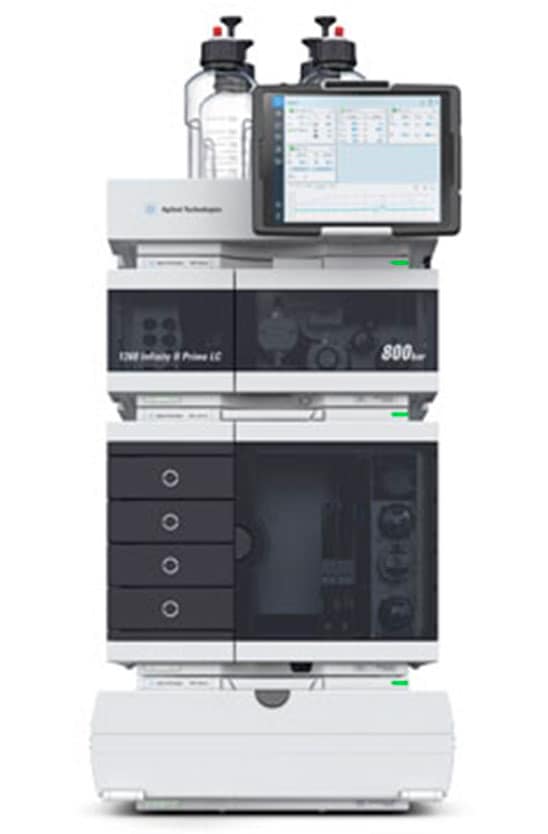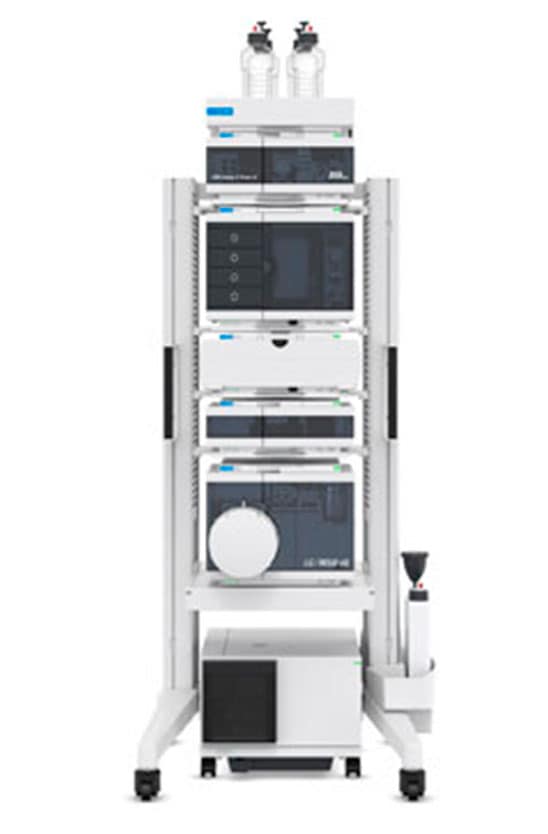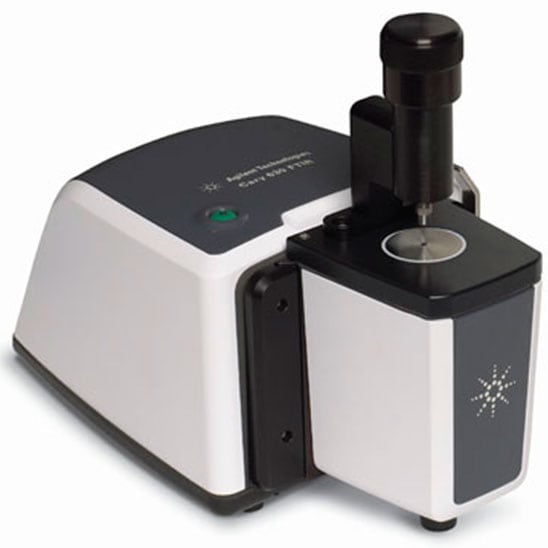There are three primary testing technologies that cannabis and hemp testing labs can utilize to perform cannabinoid content analysis (potency analysis), at a commercial scale: HPLC, LC/MS, and Fourier transform infrared spectroscopy (FT-IR). Each of these technologies has merits and is suitable for specific use cases. Let us consider each in turn.
HPLC
 Figure 1. 1260 Infinity II Prime LC
Figure 1. 1260 Infinity II Prime LCHPLC systems with ultraviolet (UV) detectors are the most commonly used equipment for potency testing in commercial cannabis and hemp laboratories.
How does it work? Chromatography simply means ‘separation'. Chromatography involves separating the mixture of cannabinoids in a sample. The amount of each cannabinoid is determined by shining UV light on the separated compounds. Each cannabinoid absorbs the UV light to a different extent depending on its concentration. Therefore, the quantity of each cannabinoid within the sample can be determined by measuring how much UV light is absorbed.
HPLC is ideal for commercial-grade labs in start-up, production, and expansion stages. With this type of testing equipment, labs can achieve high throughput potency analysis of cannabis, hemp or cannabinoids derived from oils and concentrates. With a bench footprint as small as 2 square feet, an HPLC is a compact piece of laboratory equipment. This technique produces replicable results and can identify cannabinoids within 5 to 20 minutes.
LC/MS
 Figure 2. 1260 Infinity II Prime LC/MSD iQ Systeme
Figure 2. 1260 Infinity II Prime LC/MSD iQ SystemeLC/MS is used for cannabis and hemp potency testing in scenarios when identification is critical. Mass spectrometry provides an added level of confidence and delivers results by accurately separating and measuring the mass of different molecules within a sample. Since molecules can be identified by their mass, LC/MS provides highly selective, quantitative results.
How does it work? An LC/MS system consists of an HPLC identical to that described above but instead of a non-selective UV detector, the detector is a mass spectrometer (MS). MS is a highly sensitive and selective scale that identifies and weighs molecular ions. MS can mitigate chemical interferences and is quantitatively more sensitive than UV.
LC/MS is the most sensitive and selective testing methodology available on a commercial scale. It delivers accurate results on samples in complex matrices, enabling cannabis and hemp testing labs to identify unique molecular features. Hence, LC/MS is well suited for not only regulatory potency testing but also forensics, criminalistics, and research.
FT-IR
 Figure 3. Agilent Cary 630 FTIR instrument with ATR sampling accessory attached.
Figure 3. Agilent Cary 630 FTIR instrument with ATR sampling accessory attached. FT-IR is a well-established analytical technique that can deliver quantitative and semiquantitative information about the cannabinoid content in a sample. It has a small form factor that makes it transportable for both laboratory and field work.
How does it work? FT-IR involves the transmission of infrared energy through a refined sample like an oil or concentrate. Generally, FT-IR is not used with chromatography, so the "picture" obtained in the analysis is a composite of all the molecules in a sample. To obtain quantitative information, the laboratory must build a calibration and identification model to determine the amounts of each cannabinoid in the sample.
FT-IR is a quick and simple technique for use on a ‘clean matrix' sample such as a powder or a liquid. It requires little to no sample preparation and enables labs to identify the cannabinoid content that includes the four major cannabinoids such as including THC in under a minute. A FT-IR system has a portable form factor and is relatively inexpensive to set up.
Related Content:
First AOAC Approved Method for Heavy Metals Testing in Cannabis and Cannabis products
Cannabis potency testing methodologies: What are the options?
How to Select the Right Equipment for Cannabis Potency Testing
Common Pitfalls in Cannabis Lab Testing: What You Should Know and How to Avoid Them